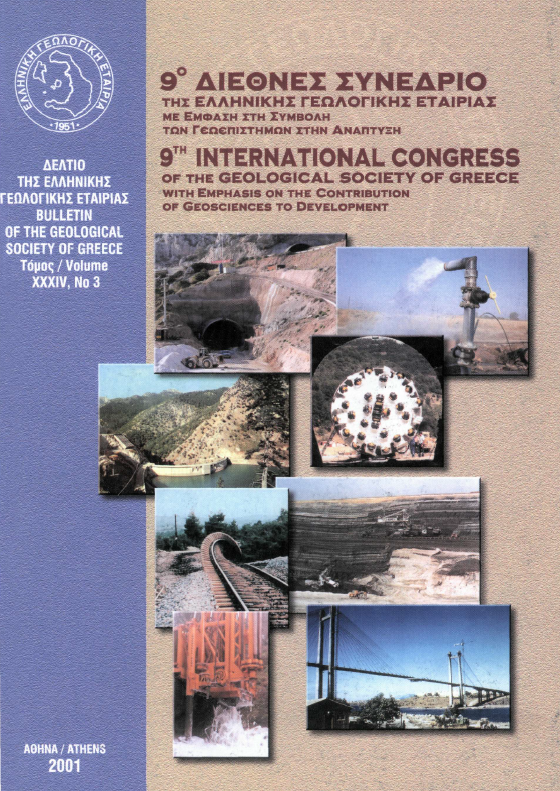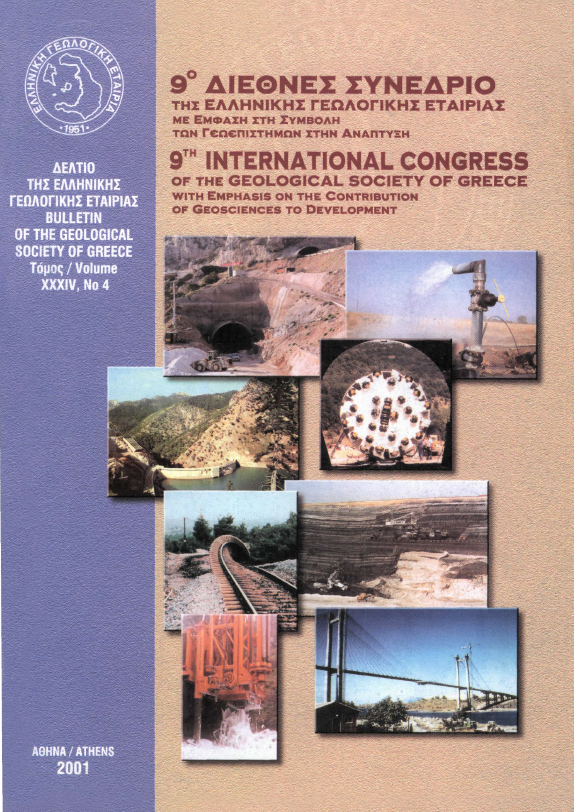EARTHQUAKE PREDICTION IN THE AREA OF N. EVIA ON THE BASIS OF GROUNDWATER RADON CONCENTRATION CHANGES
Abstract
Significant changes in the groundwater radon concentration, were observed on the 29/7/2003, at Kammena Vourla. The radon concentration changes can be attributed to the temporary enrichment of the groundwater by radon from the surrounding rocks due to the action of stress release or stress accumulation prior an earthquake. EPPO was immediately informed for the existence of these changes. On the 3/8/2003, a significant number of earthquakes in Northern Evia were recorded in an interval of a few hours. The epicentres of the earthquakes were located in the conceivable line between the epicentre of the strong earthquake of Skyros island (July 2001) and the site of the station of radon measurement at Kammena Vourla, on the extension of the Northern Aegean fault. In the 23/1/2003, in the same station, 3 significant changes of radon concentration were measured EPPO was immediately informed for impending seismic activity in Northern Evia. On the 29th of January three earthquakes were recorded. Their epicentres were located in N. Evia, close to the radon measurement, station. On the 2/2/2003, a new significant radon change occurred at Kammena Vourla followed by an earthquake (7/2/2003). In the 12/2/2003 in a letter that we addressed to the EPPO administration, the beginning of a new radon change was reported which also led to an earthquake with the same epicentre. The changes that are recorded in the system of radon measurement of Kammena Vourla are precursors of earthquakes, related to the extension of the N. Aegean fault towards the Sterea Hellas and have their epicentre in N. Evia. It seems that the method can be an important tool for local, short term earthquake prediction.
Article Details
- How to Cite
-
Μητρόπουλος Π., Notsu, K., Δελήμπασης Ν., Κακαβάς N., & Βουδούρης Π. (2004). EARTHQUAKE PREDICTION IN THE AREA OF N. EVIA ON THE BASIS OF GROUNDWATER RADON CONCENTRATION CHANGES. Bulletin of the Geological Society of Greece, 36(3), 1356–1361. https://doi.org/10.12681/bgsg.16488
- Section
- Seismology

This work is licensed under a Creative Commons Attribution-NonCommercial 4.0 International License.
Authors who publish with this journal agree to the following terms:
Authors retain copyright and grant the journal right of first publication with the work simultaneously licensed under a Creative Commons Attribution Non-Commercial License that allows others to share the work with an acknowledgement of the work's authorship and initial publication in this journal.
Authors are able to enter into separate, additional contractual arrangements for the non-exclusive distribution of the journal's published version of the work (e.g. post it to an institutional repository or publish it in a book), with an acknowledgement of its initial publication in this journal. Authors are permitted and encouraged to post their work online (preferably in institutional repositories or on their website) prior to and during the submission process, as it can lead to productive exchanges, as well as earlier and greater citation of published work.






